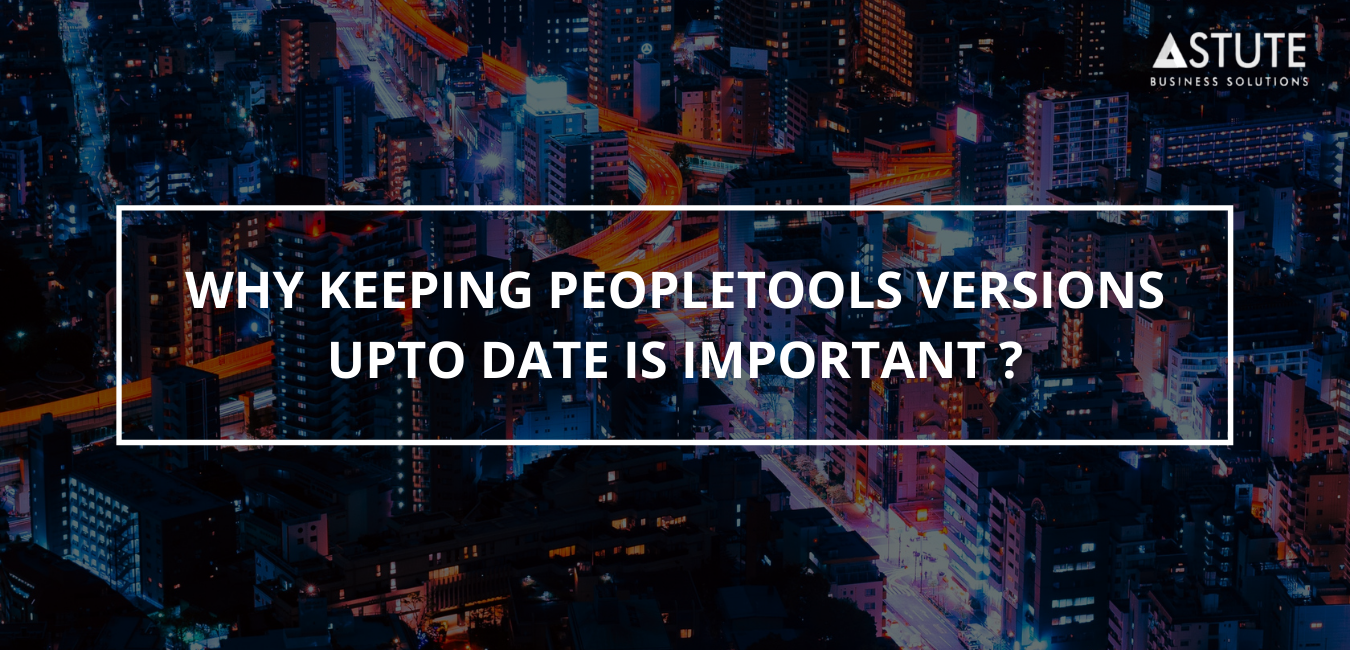The PeopleSoft Treadmill

Table of Contents
In discussing PeopleSoft with customers, it is common to hear about the PeopleSoft treadmill. You know what we're talking about - the never ending path of staying current. This article takes a moment to recognize importance, challenges, as well as to set out a strategy for staying current with your PeopleSoft investment.
Reasons to Stay Current
- Security: As with any software, vulnerabilities and security threats can emerge over time. By staying current with the latest version of PeopleSoft, you can ensure that your organization is protected from potential security breaches or data leaks.
- Compatibility: New versions of PeopleSoft are often designed to be compatible with the latest hardware and software technologies. By keeping up to date, you can ensure that your PeopleSoft system works smoothly with other systems and tools your organization uses.
- Features and functionality: Newer versions of PeopleSoft often come with new features and functionality that can improve efficiency, streamline processes, and make it easier to manage data and workflows. By staying current, you can take advantage of these features and stay ahead of the competition.
- Support: Older versions of PeopleSoft may no longer be supported by the vendor, which means that if you encounter issues, you may not be able to get the help you need. By staying current, you can ensure that you have access to the latest support resources and expertise.
- Compliance: Depending on your industry or the nature of your organization, there may be regulatory requirements that you need to comply with. Staying current on PeopleSoft can help you ensure that your systems are compliant with any relevant regulations or standards.
Challenges to Staying Current
- Cost: Upgrading to a new version of PeopleSoft can be expensive, particularly for larger organizations with complex systems and processes. Organizations may need to invest in new hardware, software licenses, and consulting services to help with the upgrade process.
- Time and resources: Upgrading to a new version of PeopleSoft can be time-consuming and resource-intensive, particularly for organizations with large and complex systems. IT staff may need to dedicate significant time and effort to planning, testing, and implementing the upgrade.
- Customizations: Many organizations have customized their PeopleSoft systems to meet their specific needs and workflows. Upgrading to a new version of PeopleSoft can require significant effort to ensure that these customizations are compatible with the new version and continue to work as expected.
- Fear of disruption: Organizations may be hesitant to upgrade to a new version of PeopleSoft out of fear that it will disrupt their operations and cause downtime. This can be particularly true for organizations that rely heavily on PeopleSoft for critical business processes.
- Lack of expertise: Upgrading to a new version of PeopleSoft can require specialized expertise that may not be readily available within an organization. Organizations may need to invest in outside expertise to help with the upgrade process.
Move and modernize your infrastructure
We are here to make your migration journey smooth and seamless.
An Approach to Staying Current
- Develop a roadmap: Developing a roadmap for upgrading to the latest version of PeopleSoft can help organizations plan and prioritize their efforts. This roadmap should include an inventory of current systems and processes, an assessment of the organization's readiness for an upgrade, and a timeline for completing the upgrade.
- Assess customizations: Organizations should assess their current customizations to determine which ones are essential and which ones can be eliminated or modified. This can help simplify the upgrade process and ensure that customizations are compatible with the new version of PeopleSoft.
- Invest in training: Investing in training for IT staff and end-users can help ensure that everyone is prepared for the new version of PeopleSoft. This can include training on new features and functionality, as well as training on any changes to existing processes.
- Engage with a partner: Engaging with the partner can help organizations stay informed about new releases and updates to PeopleSoft. This can also help organizations access support resources and best practices for upgrading to the latest version. Further, a partner may also offer services to help you stay current.
- Plan for testing: Testing is a critical part of the upgrade process, as it helps organizations identify and address any issues before the new version of PeopleSoft is deployed. Organizations should plan for comprehensive testing of all systems and processes to ensure a smooth transition to the new version.
- Monitor for updates and patches: Even after upgrading to the latest version of PeopleSoft, organizations should continue to monitor for updates and patches. This can help ensure that the system remains secure and up-to-date.
Updates, News, Trends, and New releases
Get to know the overview of all features before anyone else and gain a competitive advantage.
Arvind Rajan is Co-Founder and CEO of Astute Business Solutions. He is leading the expansion of Astute services to include Cloud Managed Services, Disaster Recovery on Cloud, and Integration and Process Automation using Platform Cloud Services.
Search
Tags
Related Posts
Subscribe Our Newsletter
Gain access to exclusive insights, technical know-how and crucial knowledge from Astute experts.
Share Article
See The Team In Action
Upcoming Events
Reach Out
Ready to Connect?
Please fill the following form, we will get back to you within a business day.
Contact Form
Contact Us
.jpg)


